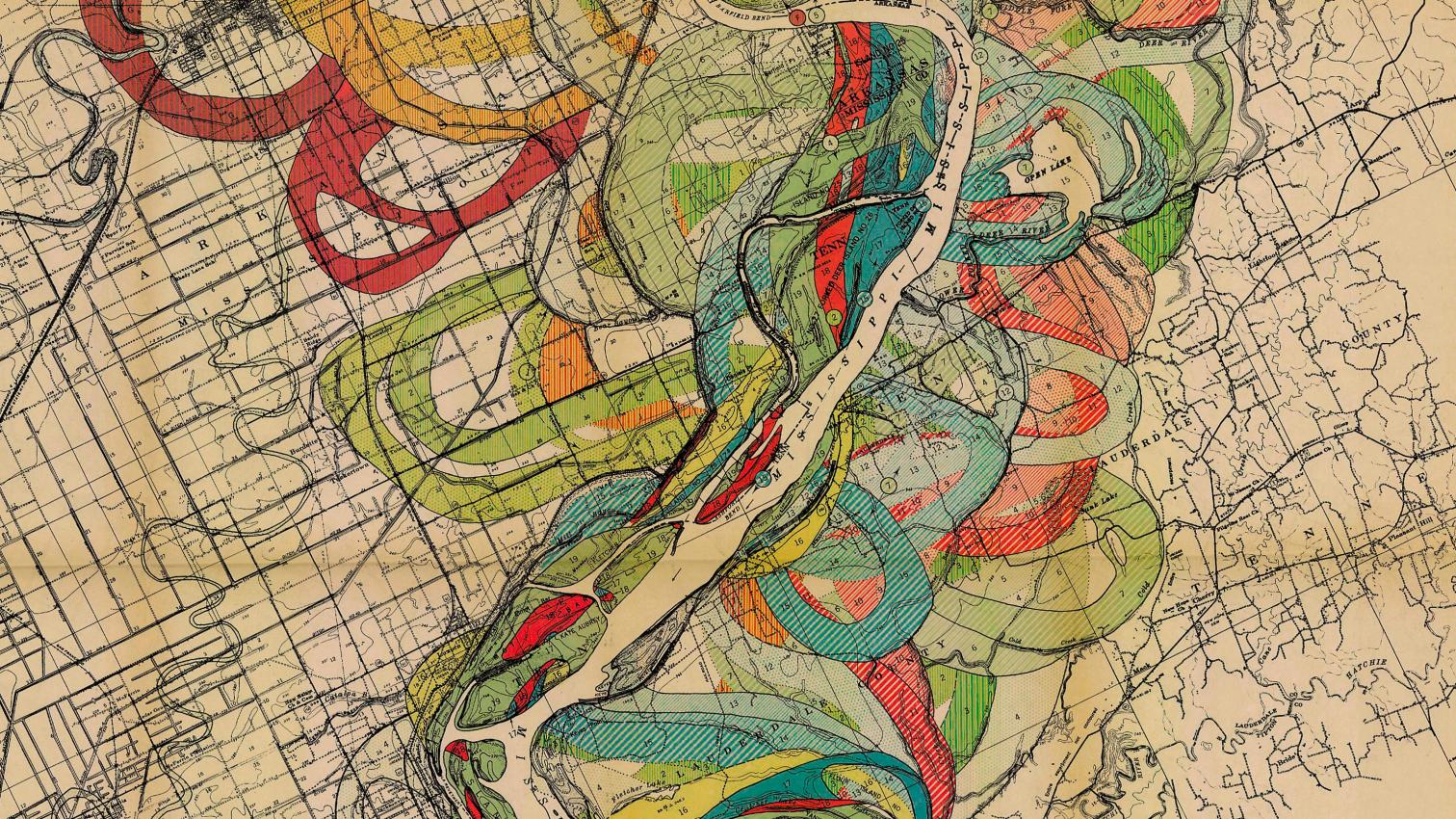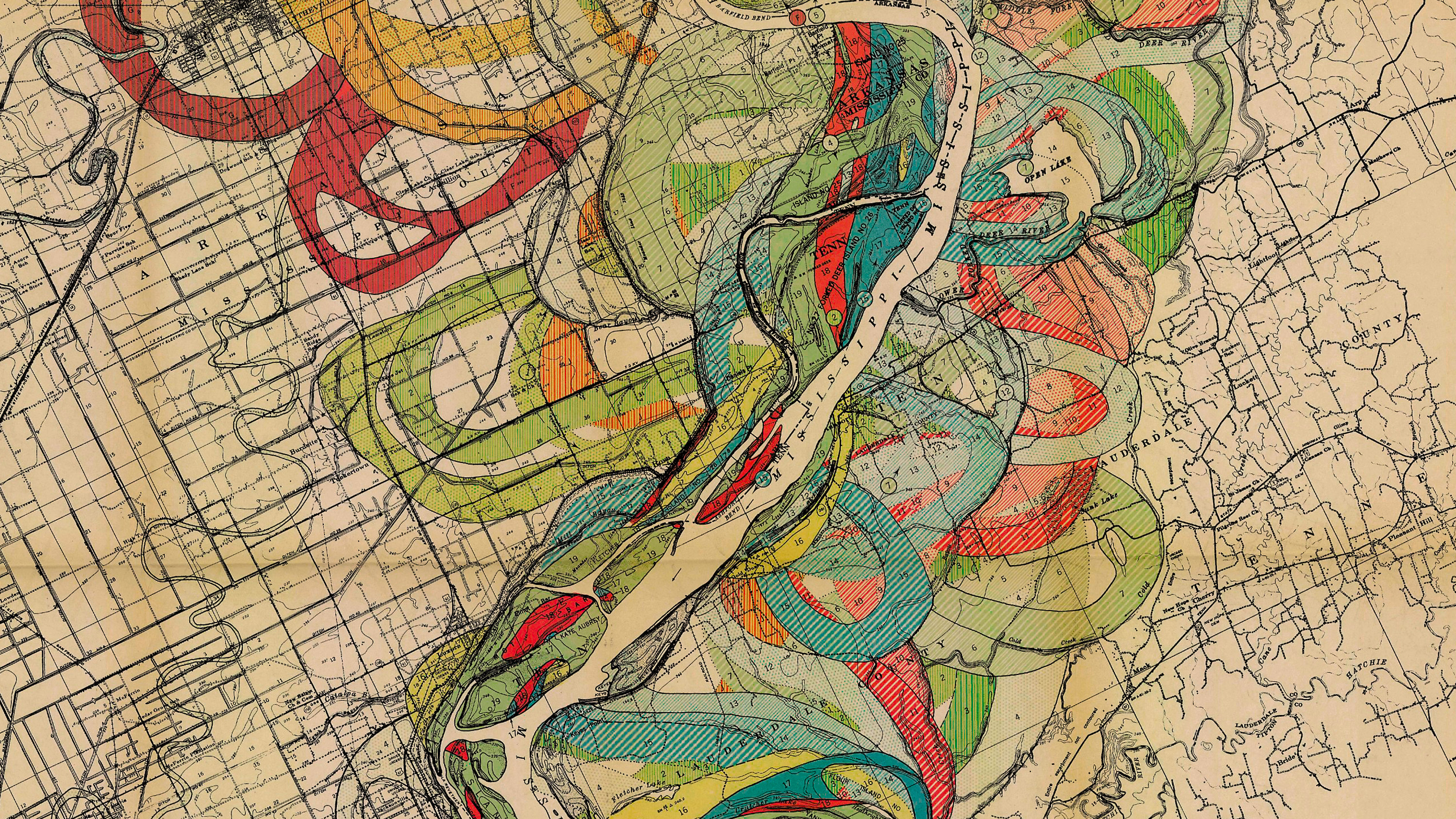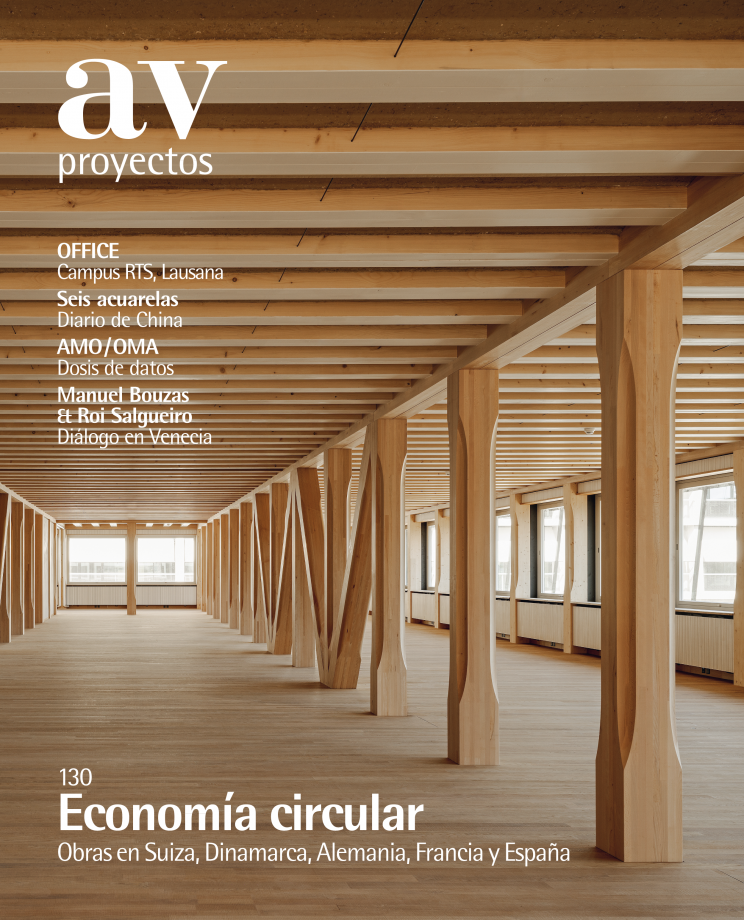
Harold N. Fisk, Former Courses of the Mississippi River, Cape Girardeau, Louisiana, 1944 (clipping)
Far from being just technical tools, diagrams organize knowledge, anticipate forms, translate systems. Often devoid of ornament, context, and scale, they claim an apparent neutrality that reinforces their power: that of persuading without having to offer arguments. In contrast with the rhetoric of discourse, the diagram convinces through layout, structure, and proximity, and has historically been a point of confluence between graphic intuition and scientific rationality. Hence, many do not represent what we already know, but what we are about to discover: bodies still undissected, territories yet to be explored, or ideas pending verification.
Diagrams, the exhibition project conceived by AMO/OMA for Fondazione Prada Venice, unfurls a vast constellation of these visual artifacts, structured according to the nine topics that articulate contemporary life with increasing intensity: built environment, health, inequality, migration, environment, resources, war, truth, and value. Each one of these topics invites to explore specific subcategories and the work of pioneers of diagrammatic design. It is not a chronological history or a retrospective exhibition of the studio; the show is intended as an open archive of spatial thinking and visual organization.
Beyond its use within the discipline, this exhibition proposes an expanded reading of the diagram as a transversal language with the capacity to tackle the complexities of the present. In a world governed by invisible infrastructures, opaque algorithms, and interdependent systems, the diagram becomes a fundamental tool to imagine other ways of living, thinking, and acting...[+]






